
surfresearch.com.au
john witzig : new era, 1966.
john witzig : new era, 1966.
|
|
|
|
|
|
 |
surfresearch.com.au
john witzig : new era, 1966. |
| 1966
Australian Titles |
Nat Young
- Bob McTavish : A New Era |
John Witzig : An End to an
Era? |
John Witzig : George Greenough. |
|
1966
Australian Championships
Part one - Bob Evans.John Pennings - Lester Brien - Bob Evans .... Results: 1st Nat Young, 2nd Bob McTavish, 3rd Russell Hughes, 4th Midget Farrelly, 5th Robert Conneely, and 6th Bobby Brown (Results courtesy of Andrew McKinnon, October 2010). Junior - Peter Drouyn Women - Gail Couper. |
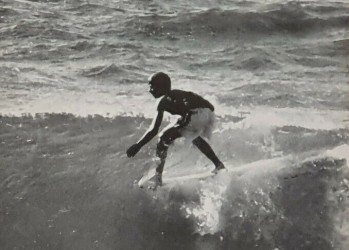 |
Page 25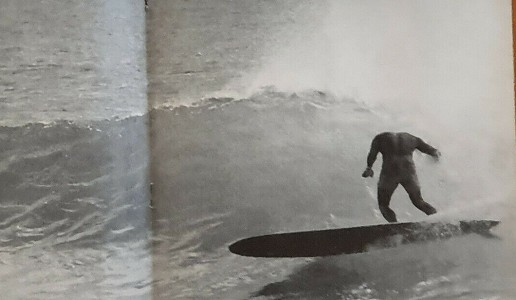 Bob McTavish (Headless) Page 27 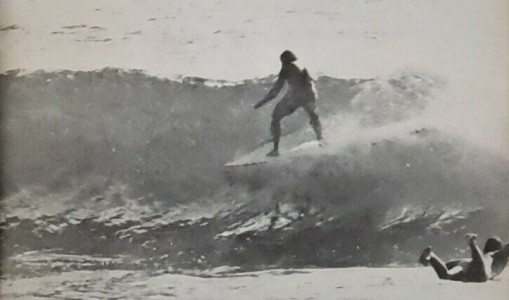 |
Page 26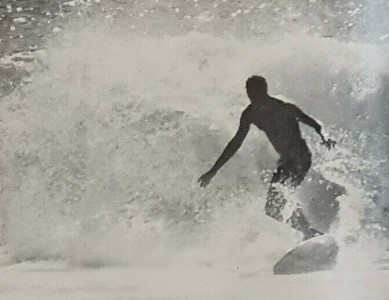 Nat Young:
"We've been (emphasising?) the power of the cutback and placing yourself deeper in the curl."  Nat Young: "When you want stall, you just put your foot on the inside rail." Bob
McTavish: "You're riding so tight and (??)."
|
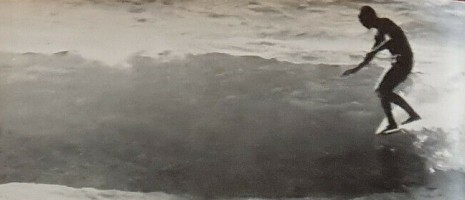 Peter
Drouyn
|
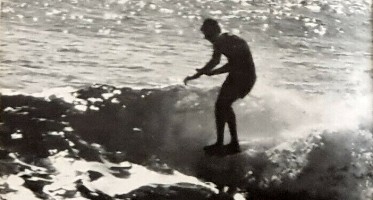 ???
|
Page 31?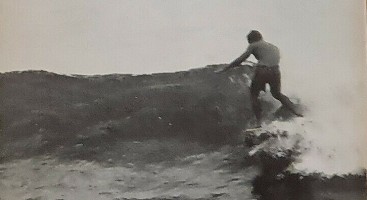 |
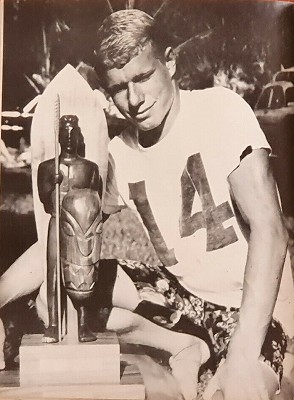 (Makaha
Trophy, 1962.)
|
Page 37 An End to an Era?
If a 'new era' has begun for surfing,
what has passed?By John Witzig Is this 'new era' merely a development in he evolution of the sport, a change from yesterday that will itself be changed tomorrow? Is it's importance being greatly exaggerated by those who feel they are part of it. These questions will be answered by time and little else. When we look back will be wise and say we knew. But I think that now, 1966 seen the conclusion of a definite period in the surfing history of Australia.. The absolute domination of the surfing scene by Bernard Farrelly has ended. This is not to say that he will not present a threat in contests for years to come. He will (???) that this first first period of modern surfing in Australia is drawing to a close and no other person has so much advanced progress during this time than Farrelly. Midget has meant 'surfing' to the majority of of Australians. He has achieved a national hero image a little unwillingly - Once Makaha International Champion, once World Champion, twice Australian Champion, it is doubtful that he will really be (??) to (gain?) on what he has held. Midget has been the (??) champion, concerned with principles rather than explanations. He was most importantly the first , he established standards that others will follow or perhaps choose not to. In later years has has preferred isolation and self imposed exile from the hectic world of competition. |
| Page 38 The transition from the young surfer Bernard Farrelly to the person that we know today is striking. An enigma to many in his early twenties, Midget has followed an unusual path from extroversion in his youth to a state of almost absolute and cynical introspection. The first major win at Makaha was recognisable perhaps more than any other for the beginning of this change. Midget became aware of responsibilities and of pressure from outside sources and this undeniably caused a retreat from his outgoing nature. Craig McGregor has called Midget 'shockingly (?) mature.' I will add 'cynically,' and hope that the years will mellow the Farrelly that they have created. |
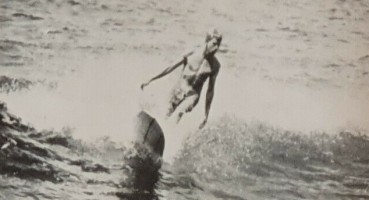 |
| Page 39 | 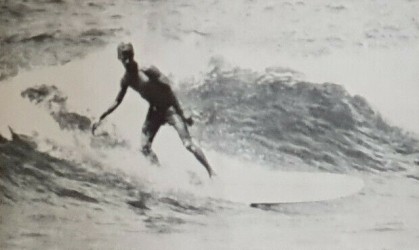 |
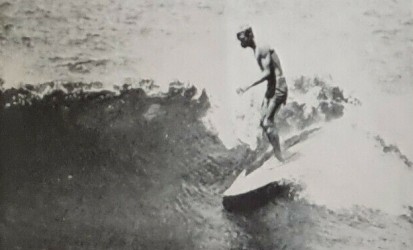 |
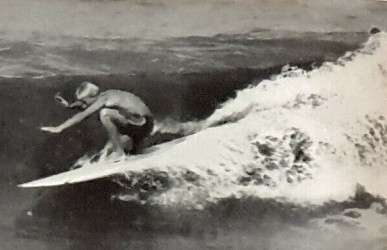 |
Midget - An early contest. 1963- with
Nat and Dooley
|
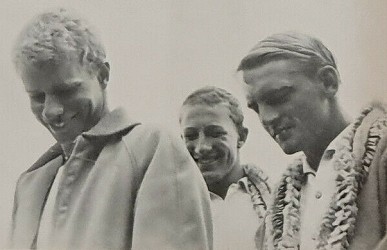 |
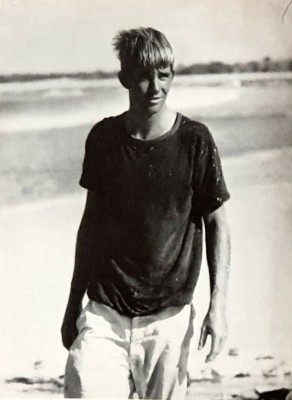 |
George Greenough
Page 43 WHO is Greenough? An American suffer in his early twenties who is on his second trip to Australia. He is a professional lobster fisher-man in California. He surfs the Point Conception area and the off-shore islands. He uses a highly technically advanced belly board. Why is Greenough exerting so much influence upon the Australian surfers with whom he comes in contact? The technical advancement that he shows in his boards he carries into his surfing and rides further back into the curl, in a more critical and involved part of the wave than any surfer on a surfboard as we know it. Where is Greenough? North of Brisbane in the Noosa-Caloundra area. He stays in the district because he finds the wave conditions in which he may push his equipment and his knowledge and feeling for surf to its absolute extreme. What is Greenough? A fine surfer. Something of an eccentric. A practical, talented person who builds advanced waterproof camera cases, fire places, and Iri-pods. Above all, he is an interesting and intensely liable surfer. |
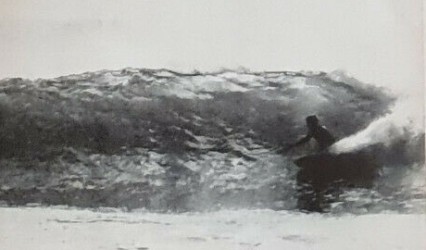 |
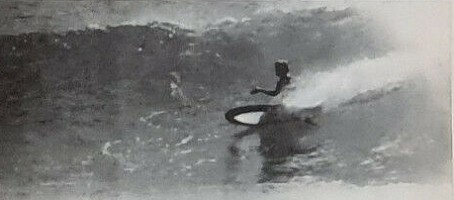 |
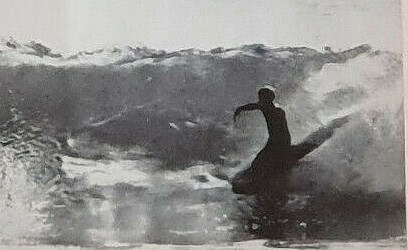 |
Surfing World Volume 8 Number 1, July 1966. Cover: Nat Young, George Greenough; Point Cartwright. |
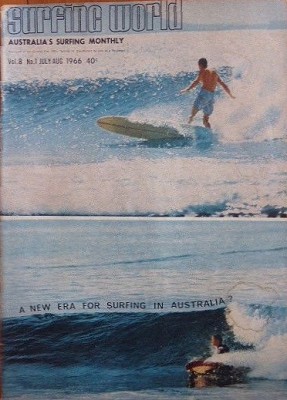 |
|
|
|
|
|
|